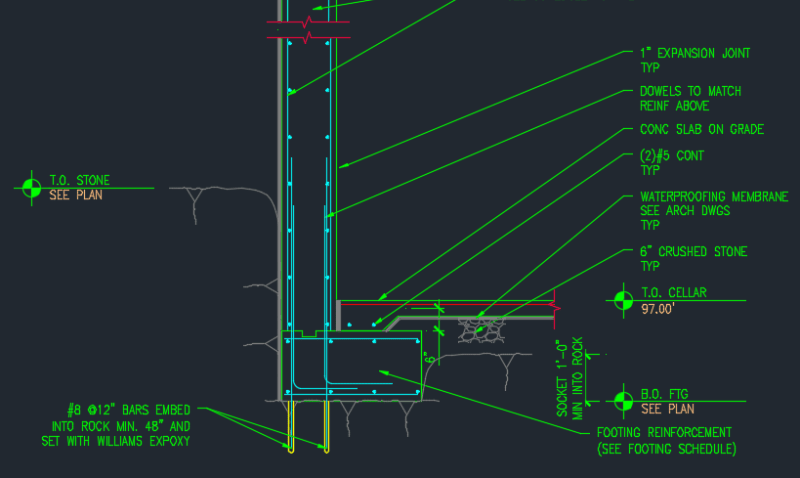milkshakelake
Structural
- Jul 15, 2013
- 1,178
How much should I embed rebar into rock for strip footings? The rock is assumed to be weathered rock but no rock cores were taken for cost reasons; it could very well be hard rock. The strip footings take a small amount of gravity load, with most of the load coming on columns (~400-500 kips typically). Base shear is about 200 kips but with the number of bars, it comes out to a few hundred pounds shear per rebar.
My current (non)design is (2)#8 @ 12" with 48" embedment and epoxy, which is overkill. Would like to reduce it. I don't think any rebar is required at all, even if rock has low friction coefficient, but I see others use it so I don't want to be blamed for not following industry standard. The only problem is, my competitors don't specify an embedment, and I don't like leaving something like that up for debate.

My current (non)design is (2)#8 @ 12" with 48" embedment and epoxy, which is overkill. Would like to reduce it. I don't think any rebar is required at all, even if rock has low friction coefficient, but I see others use it so I don't want to be blamed for not following industry standard. The only problem is, my competitors don't specify an embedment, and I don't like leaving something like that up for debate.


![[pipe] [pipe] [pipe]](/data/assets/smilies/pipe.gif)
![[ponder] [ponder] [ponder]](/data/assets/smilies/ponder.gif)